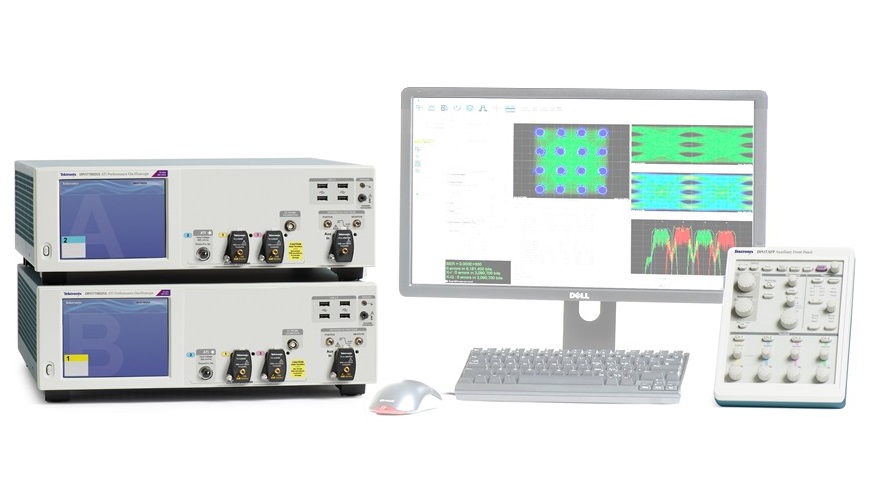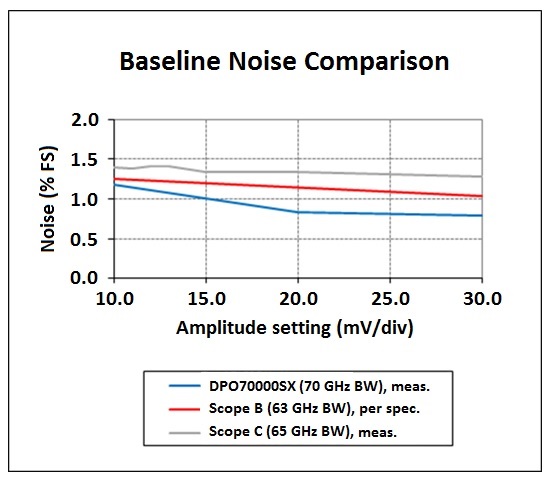In design of electronic communication systems today, high bandwidth is an obvious requirement for the oscilloscopes used to measure system and component performance. But what is equally important is that such systems provide extremely high accuracy, faithfully capturing signals so that the performance margins required in communications systems can be optimized. With the introduction of the Tektronix DPO70000SX 70 GHz ATI Performance Oscilloscope, designers now have both these requirements fulfilled. The 70-GHz real-time oscilloscope — the first to use Tektronix’ patented Asynchronous Time Interleaving (ATI) technology (see “Methods used to boost real-time oscilloscope bandwidth,” Electronic Products , July 2014) — adds to its outstanding performance a physical design that will likely shape that of all advanced scopes that come after it.

Compared to its ultra-high-bandwidth real-time competition, the new scope has the lowest noise (see fig. below ) as well as the highest number of effective bits (at 70 GHz, ≥4.8 bits at settings >200 mV full-scale). The scope has a typical 10-to-90% rise time of 5.6 ps and can take samples at a 200-Gsample/s rate (5 ps/sample resolution). The standard record length, 62.5 Mpoints, can optionally be expanded to 1 Gpoint.

Each scope provides a single 70-GHz-channel input (± 500 mVrms and ±0.75 Vpk ) and two 33-GHz-channel inputs (8 V maximum); channel use is an either-70-GHz-or-33-GHz choice. A version of the scope with four 33-GHz channels (no 70-GHz operation) is also offered. Units are designed so that they can work in tandem with up to three additional units (four total). No external controller is needed for tandem operation, which means multiple units can be used together or separately as the need arises, and individual units can be placed closer to the unit under test.
Unlike previous high-end scopes, the DPO70000SX is extremely compact, with a 17.8 x 21.8-in. footprint and a 6-in. height (rack-mount dimensions differ slightly). The compactness is due to the fact that the built-in screen size is very small, and there are there are no scope control knobs or buttons. That’s because the scope is designed for use with a large, external LCD with touch/mouse/keyboard controls. However, an external, auxiliary front panel provides familiar scope controls for those who desire them.
Not that it doesn't go without saying, but the scope does offer the kind of advance triggering (PinPoint Trigger), analysis (Optical Modulation Analyer, DPOJET jitter/noise analysis, SignalVu, and more), synchronization (UltraSync), and I/O functionality (USB 3.0/2.0, 10 base-T to Gigabit Ethernet) that users would want with this type of high-end tool. And pricing (from $315,000 for a 70-GHz unit, $285,000 for a 33-GHz one) is in line with the delivered performance.
Advertisement
Learn more about Tektronix





